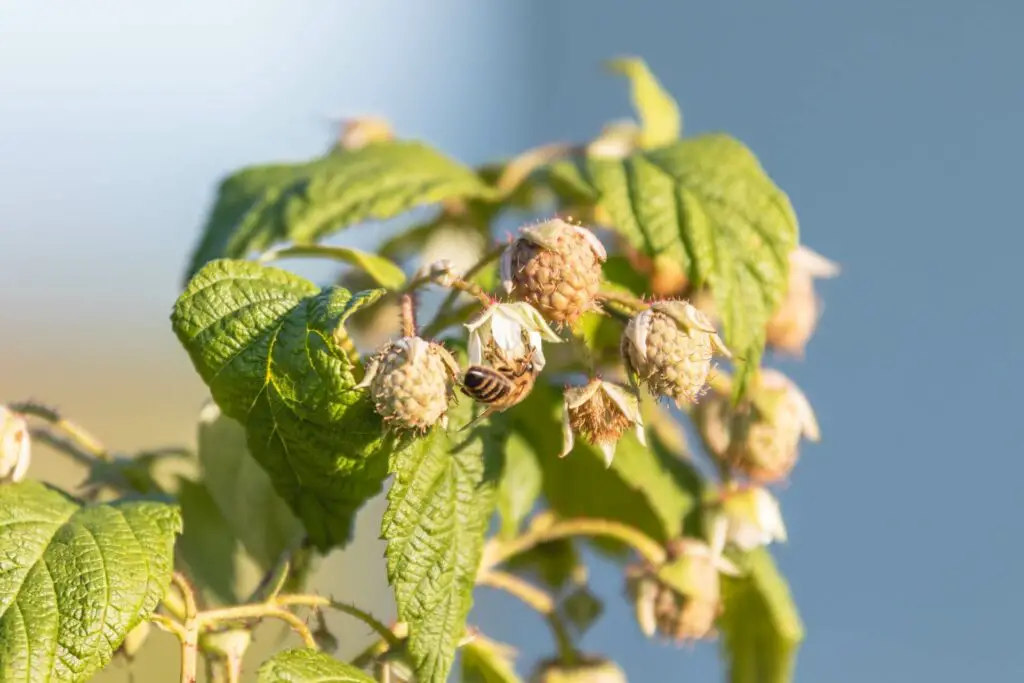Last updated on September 21st, 2023 at 11:44 am
Want a quick breakdown of what bees eat on a day-to-day basis?
Most bee’s diets consist of nectar and pollen. Nectar provides a valuable source of carbohydrates, while pollen gives bees all the protein they need to grow and thrive.
That’s the simple answer, but there’s so much more to discover about how these interesting insects feed themselves, let’s dive in to find out more.
Nectar
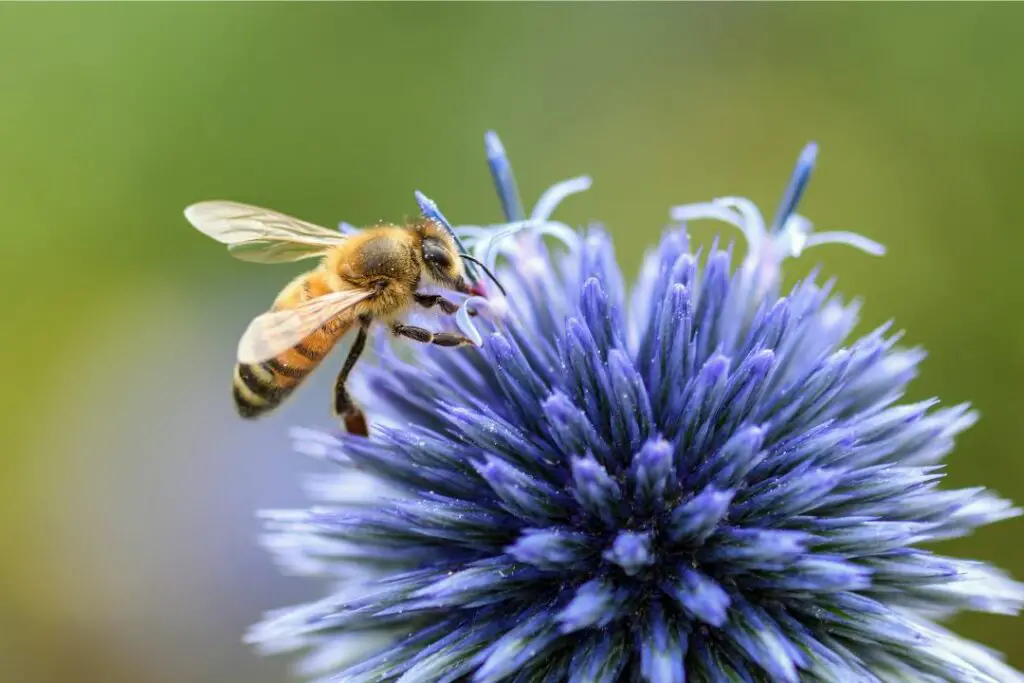
First, let’s take a look at how Nectar, the sweet fluid produced by plants, is used by bees as a precious source of carbohydrates and, more importantly, energy.
We’ll start with a worker bee flying over your garden for precious resources.
How do bees find nectar to eat?
While buzzing around, bees rely on their sharp eyesight to spot flowers.
They can see a wide range of colours, including ultraviolet light, helping them to perceive flower patterns and markings the human eye can’t see.
Alongside their superhuman eyesight, they also have a remarkable sense of smell.
Bees can detect the sweet scent of nectar from a considerable distance, guiding them towards blooming flowers.
Extracting the precious nectar
Once a bee discovers a suitable flower, it lands on it and inserts its long tongue, called a proboscis, into the base of the flower, where nectar is produced.
The proboscis acts like a straw, helping the bee draw the nectar into its mouth.
While sipping for its own benefit, the bee also collects nectar inside its stomach to return to the hive.
*Amazing fact – Bees can drink up to 80% of their own body weight in nectar during a single foraging trip!
Bringing nectar back to the nest
After consuming enough nectar, the bee takes flight, returning the precious cargo to its hive or nest.
Once back at the hive, the bee regurgitates the collected nectar and passes it through their mouths to other female worker bees. This process is known as trophallaxis.
This fascinating behaviour helps to process the nectar by reducing its water content and adding enzymes from the bee’s bodies.
This enzymatic action begins the transformation of nectar into the honey we all know and love.
The processed nectar, now called honey, is then stored in wax cells within the hive, ready to be consumed as a stable and energy-rich food source.
Pollen
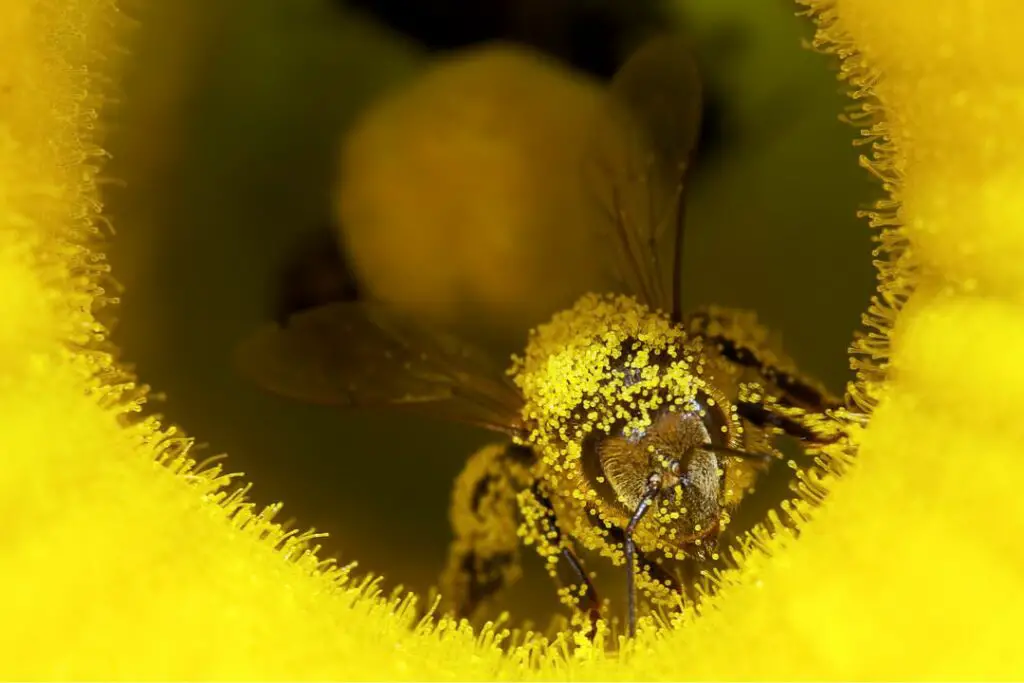
Pollen is a powdery substance produced by the male parts of flowers.
It contains reproductive cells that must be transferred to the female parts of other flowers for fertilization and seed formation.
But flowers can’t do this by themselves.
They rely primarily on the various species of bees that visit them on a daily basis.
So why do bees collect pollen to eat?
Once a bee lands on a flower, the tiny hairs covering its body (Latin name scopae), especially on the legs and abdomen, pick up the powdery pollen grains on the flower’s male reproductive parts called stamens.
As the bee moves from flower to flower, the pollen grains stick to its fuzzy body due to electrostatic forces and the stickiness of the pollen itself.
But bees aren’t just unintentionally moving pollen around; they gather pollen for a specific reason.
Some known species use specialized structures on their hind legs called pollen baskets or corbiculae to help them carry even more.
These pollen baskets are concave areas surrounded by long hairs that create a cup-like structure to hold the pollen securely.
Species with this helpful adaptation include the bumble bee, honey bee, stingless bee and orchid bee.
Transporting and storing the pollen
As the bee continues foraging, the collected pollen grains are packed into the baskets or long hairs on its hind legs.
Once the pollen baskets are full or the bee completes its foraging trip, it returns to the hive or nest, carrying the valuable protein-rich pollen cargo.
Back at the hive, the bee brushes the pollen from its legs and mixes it with nectar or honey, forming pollen pellets.
The bee stores these pellets in specific cells within the hive, serving as a vital protein source for future use.
This is especially important for bee larvae which rely on protein to help them develop into healthy, mature bees.
Do Bees Eat Honey?
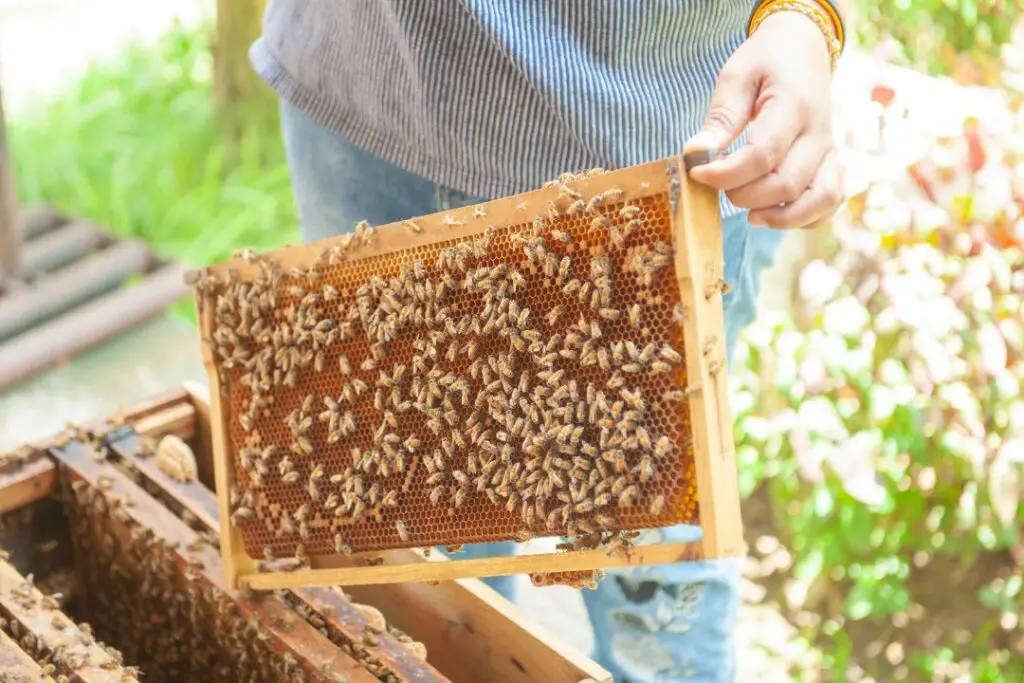
Yes, all that hard work collecting nectar goes toward creating one of the richest natural foods available, honey.
Once worker bees have treated and stored their nectar, they start dehydrating it.
They do this by flapping their wings in close proximity to evaporate water from the nectar; as the nectar becomes more viscous, it eventually turns into honey.
When the workers are happy with the resulting honey, they’ll start capping each cell with beeswax to keep it fresh and free from contamination.
These capped cells now act as the nest’s primary nutrition source and an essential food store for the upcoming winter months.
How Do Beekeepers Feed Their Bees?
Wild bees are at serious risk when food sources dry up in the colder months, but with a big honey store, they should be able to survive the winter.
Managed colonies of European honey bees supervised by beekeepers have the advantage of supplementary food.
This comes in two forms; sugar syrup and pollen substitutes.
Sugar syrup
Sugar syrup serves as an alternative source of carbohydrates when nectar is scarce.
Beekeepers place the syrup in feeders or specialized containers within the hive, allowing the bees to access the syrup easily without leaving the hive’s protection.
This typically comes as a fructose-based syrup purchased for bee equipment suppliers or a homemade version made by mixing water and white granulated sugar.
Pollen substitutes
Beekeepers can also provide pollen substitutes/protein supplements to their bees.
They’re commercially available products designed to mimic the nutritional composition of natural pollen.
They do this using a combination of various ingredients such as soy flour, yeast, and other proteins.
Beekeepers offer pollen substitutes in the form of patties or cakes placed within the hive.
The bees then collect and consume the pollen substitute, ensuring they receive adequate protein for brood rearing and overall colony health.
Do Some Bees Eat Meat?
Believe it or not, a bee species has evolved to eat meat instead of their normal diet of nectar and pollen.
The vulture bee found in South America has developed a taste for meat.
To be more specific rotting meat is left on carrion rather than live victims.
And yes, these types of bees still produce honey, if you’re wondering.
Often referred to as ‘meat honey’, it reportedly offers a rich flavour unlike that found anywhere else in the world, but I think I’ll have to take their word for it in this instance.
Conclusion
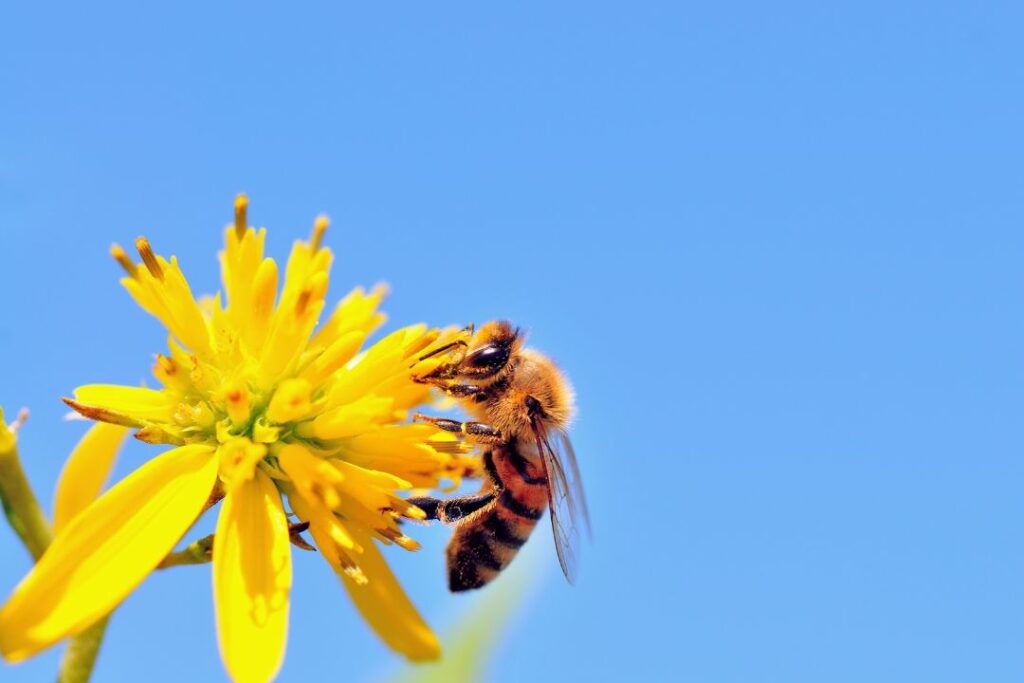
Bees play a crucial role in our ecosystems and food production, perhaps more than any other animal on the planet.
Understanding what bees eat deepens our appreciation for their vital role as pollinators and highlights the interdependence between bees, flowers, and the intricate web of life.
So, whether you’re a gardener, a nature enthusiast, or a beekeeper, let’s celebrate the beauty and importance of bees by creating bee-friendly environments, planting bee-friendly flowers, and supporting conservation efforts.
Don’t miss out on our other great reads below, packed with more fascinating insights into the insects in your garden.

